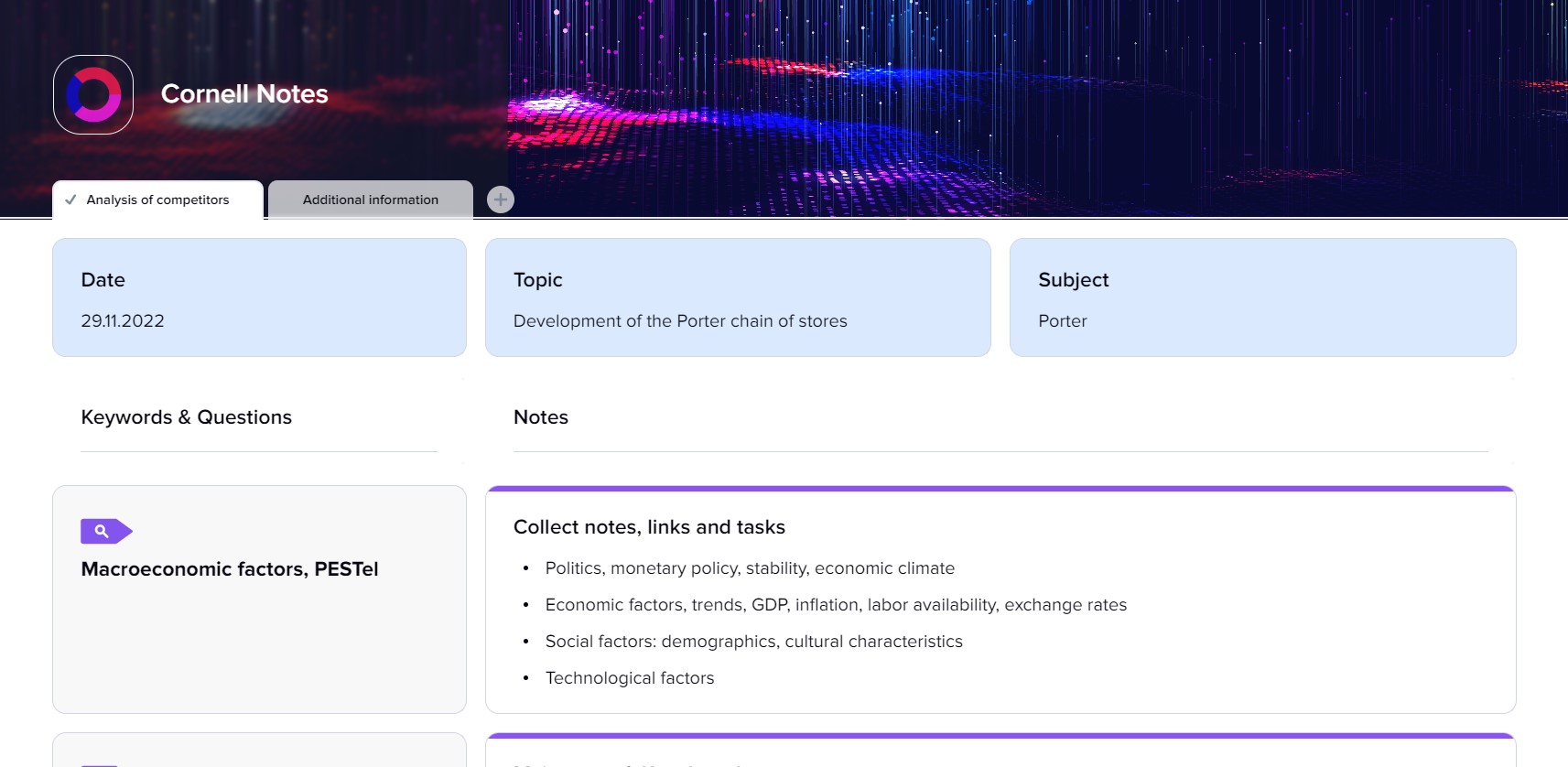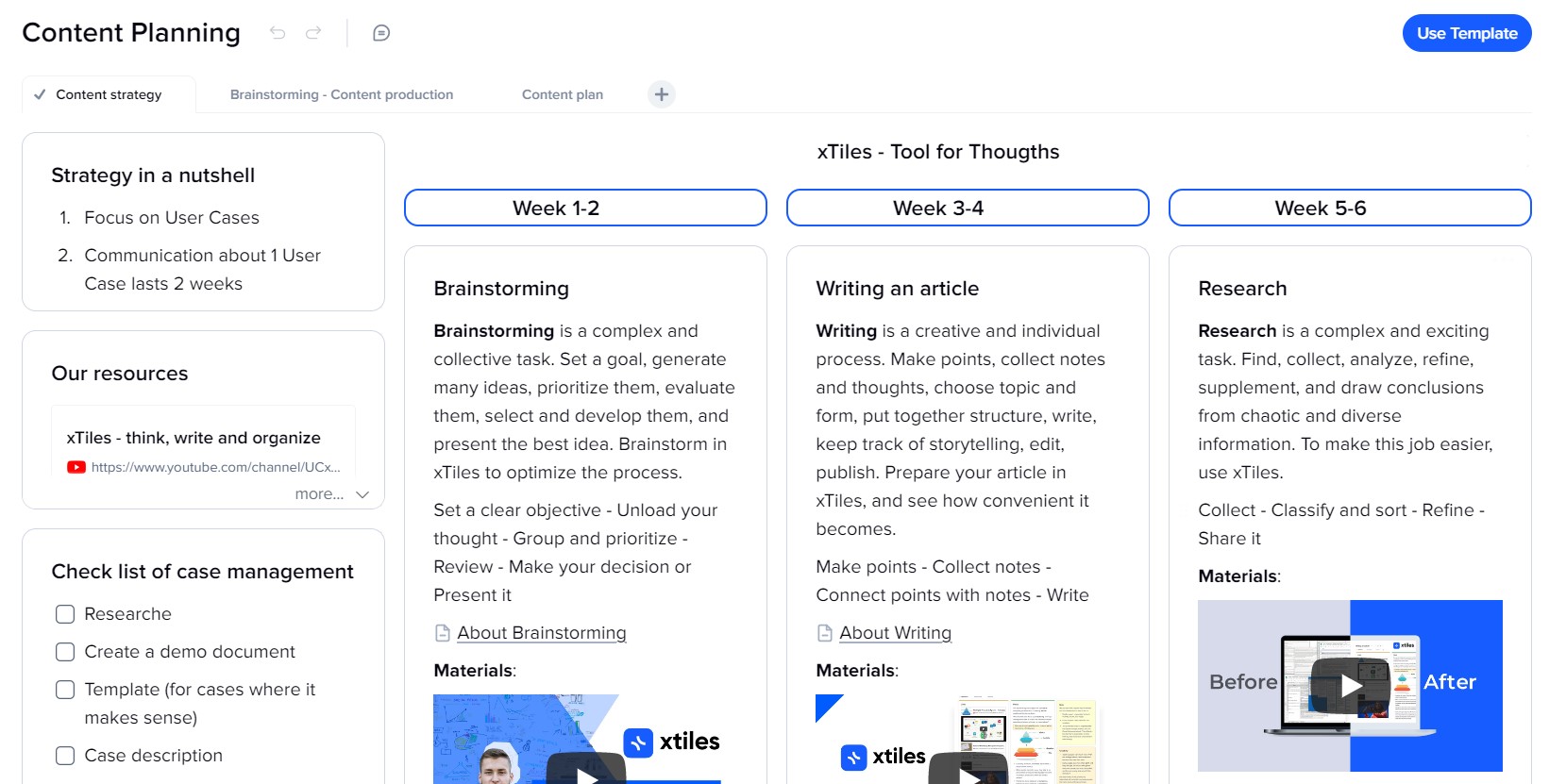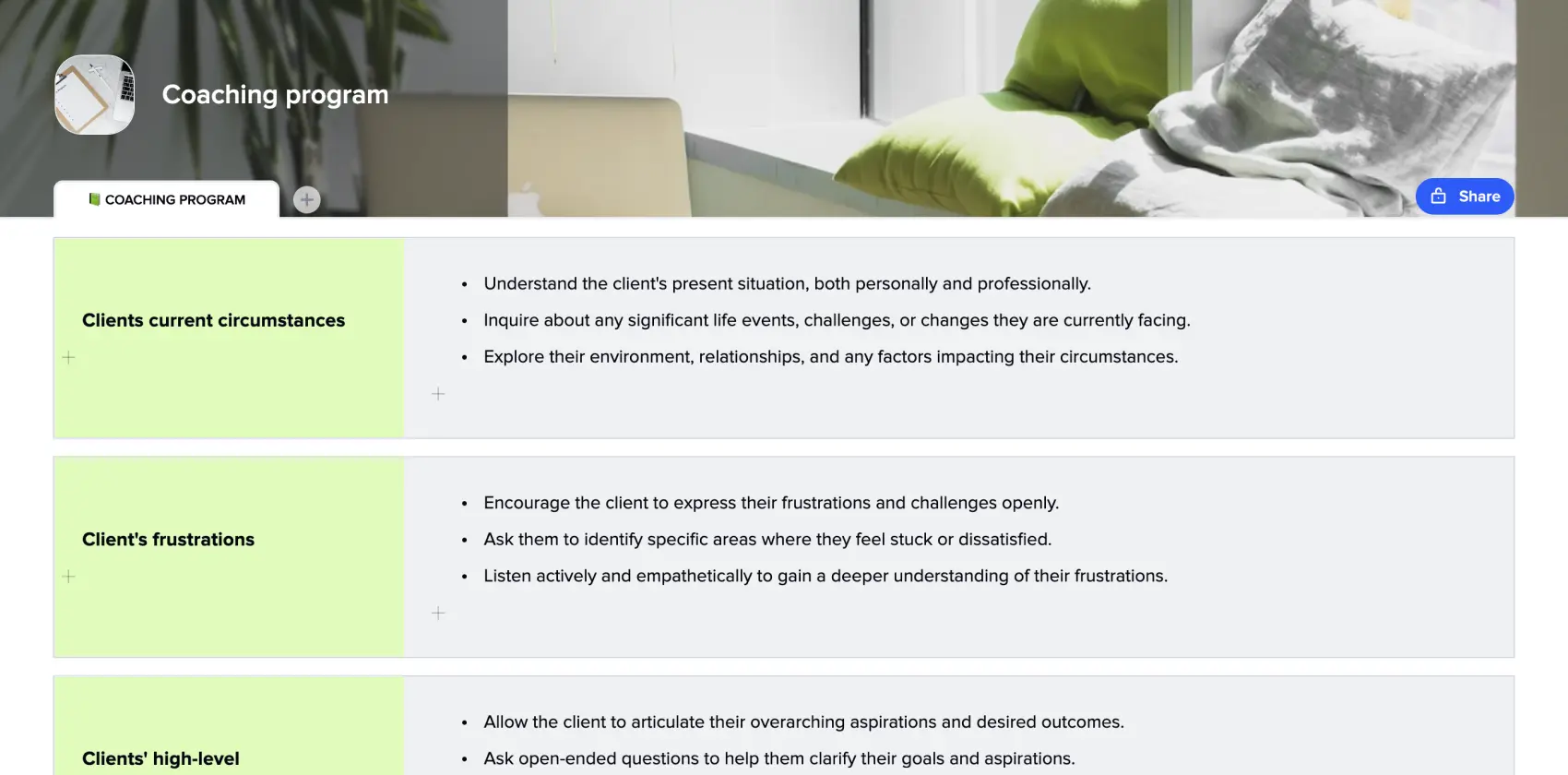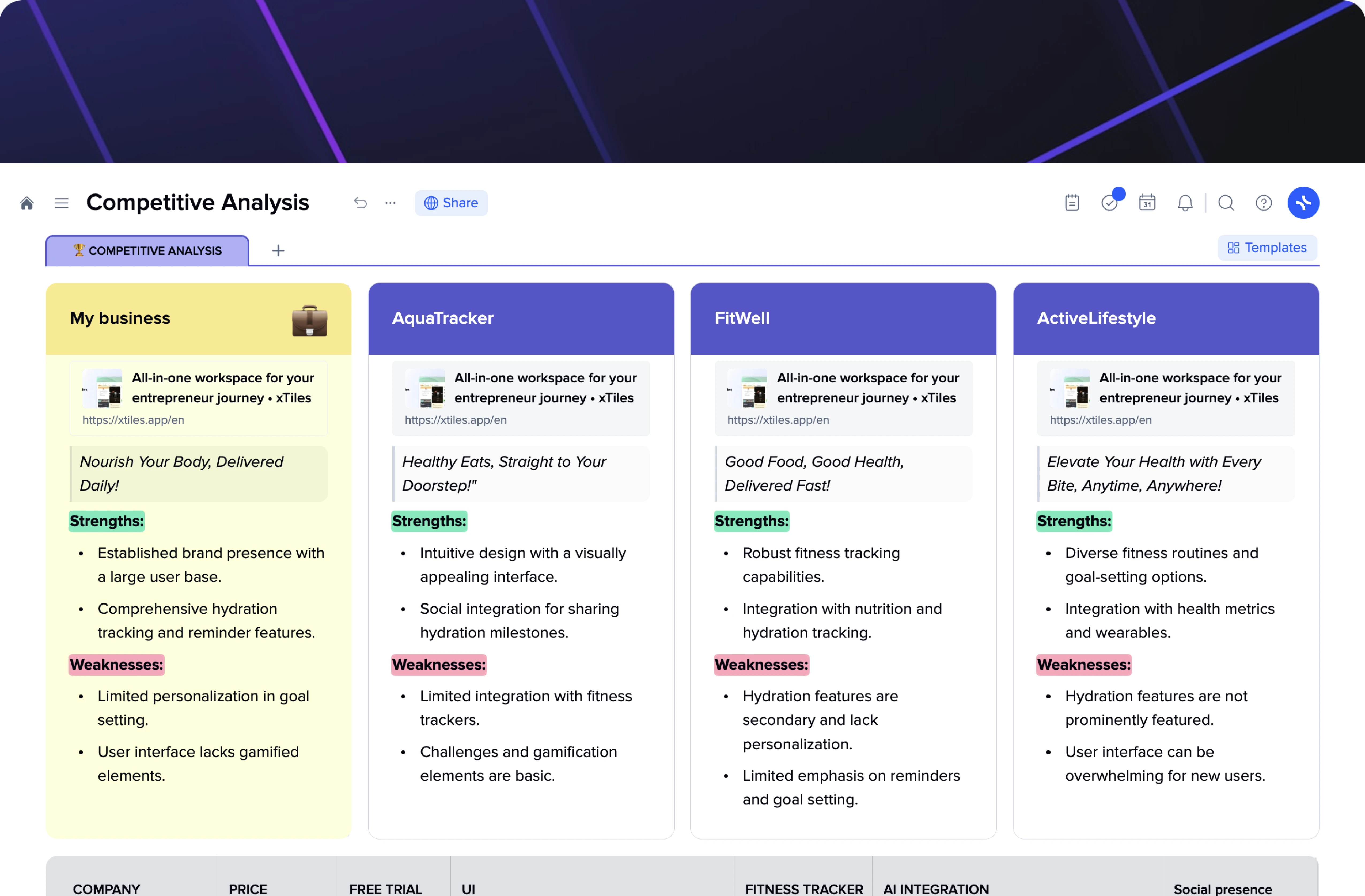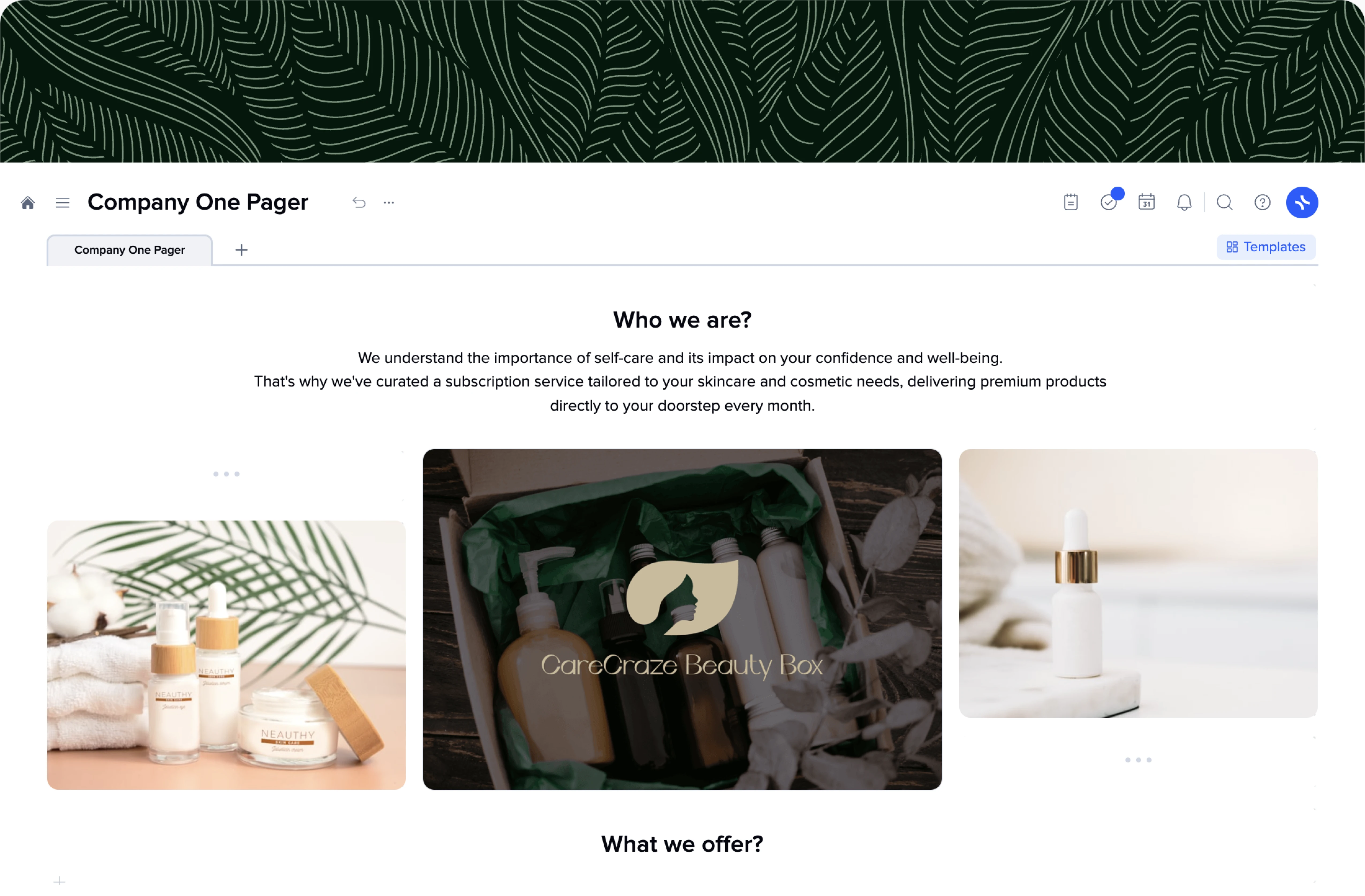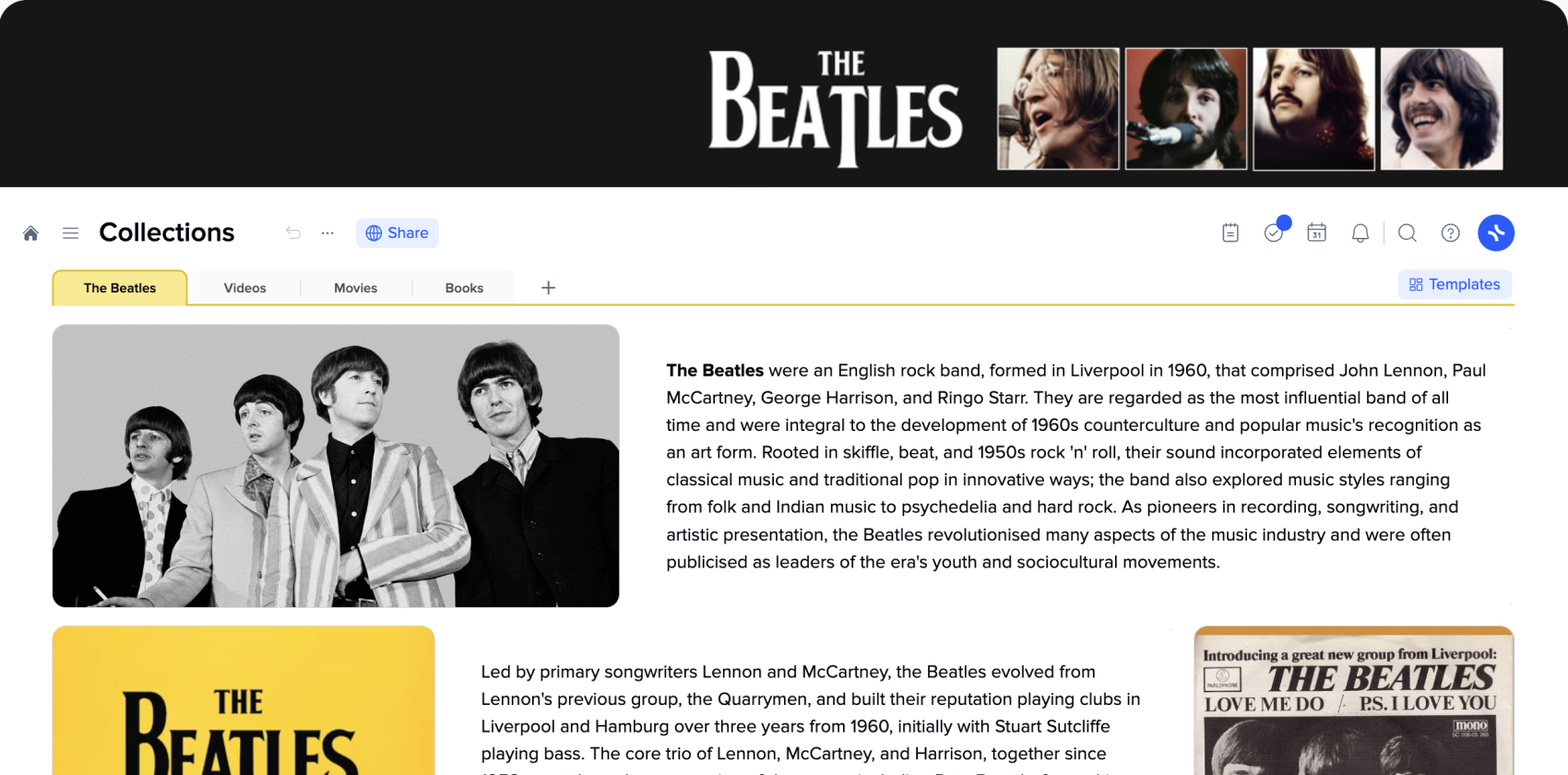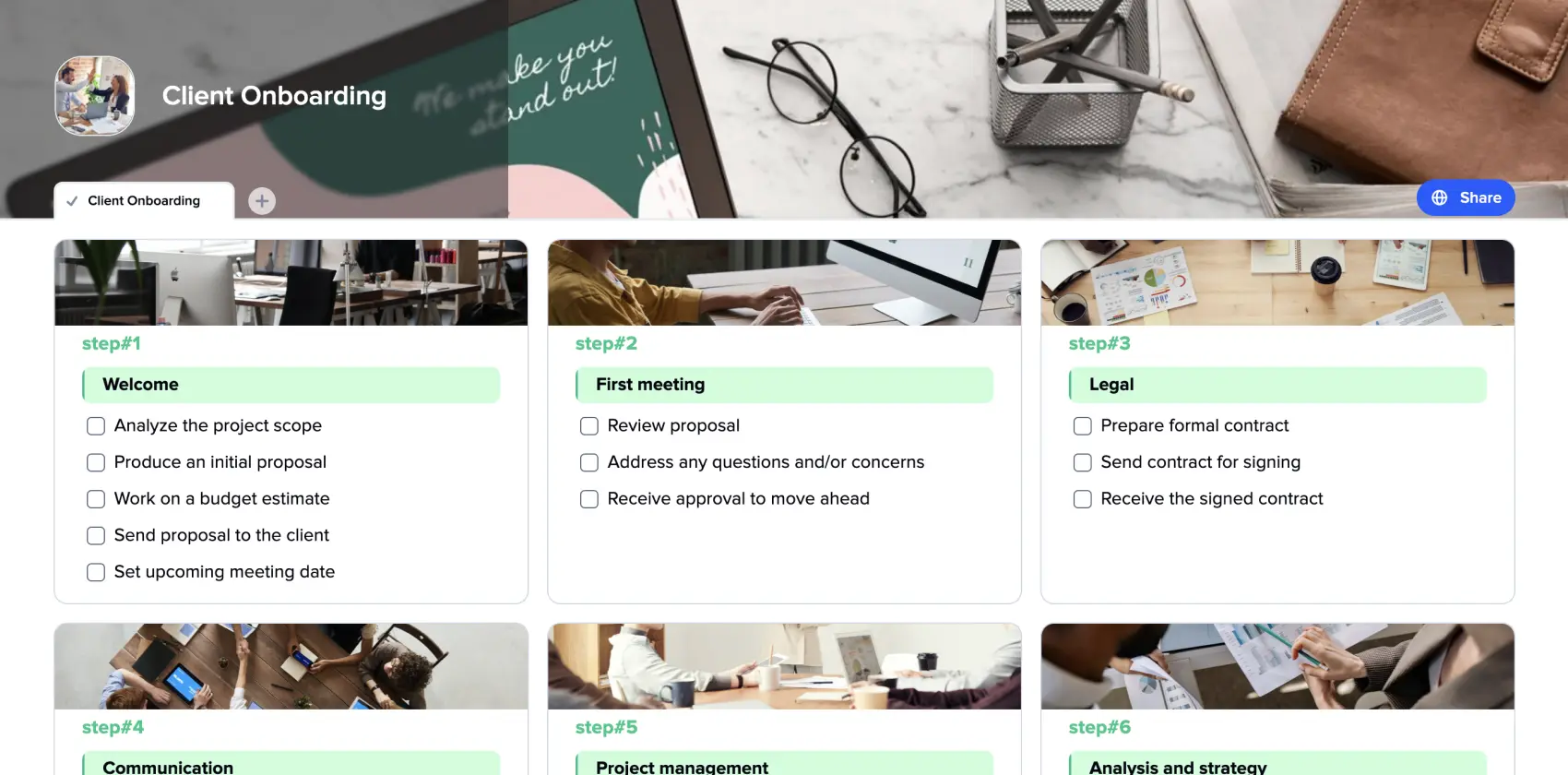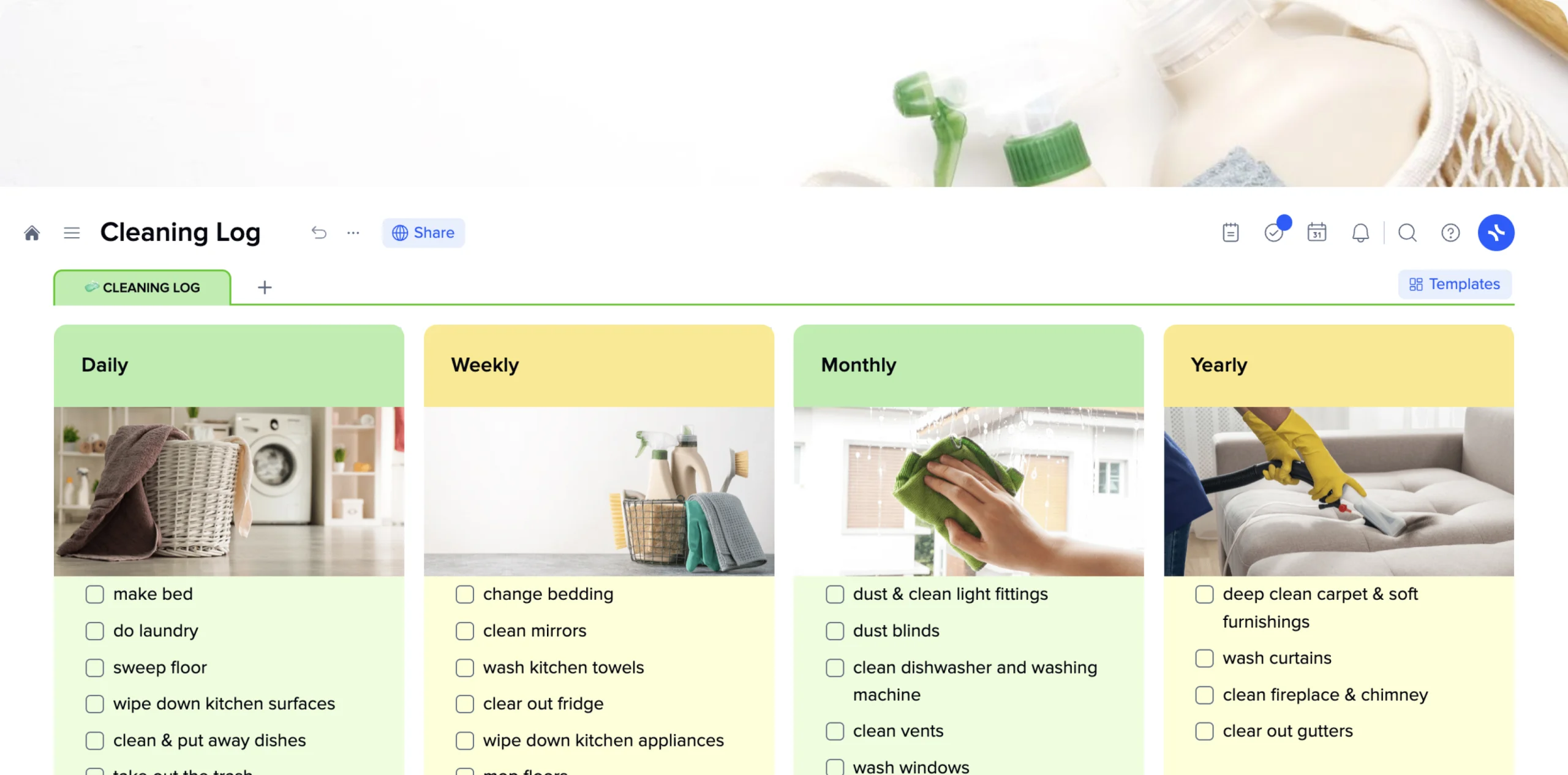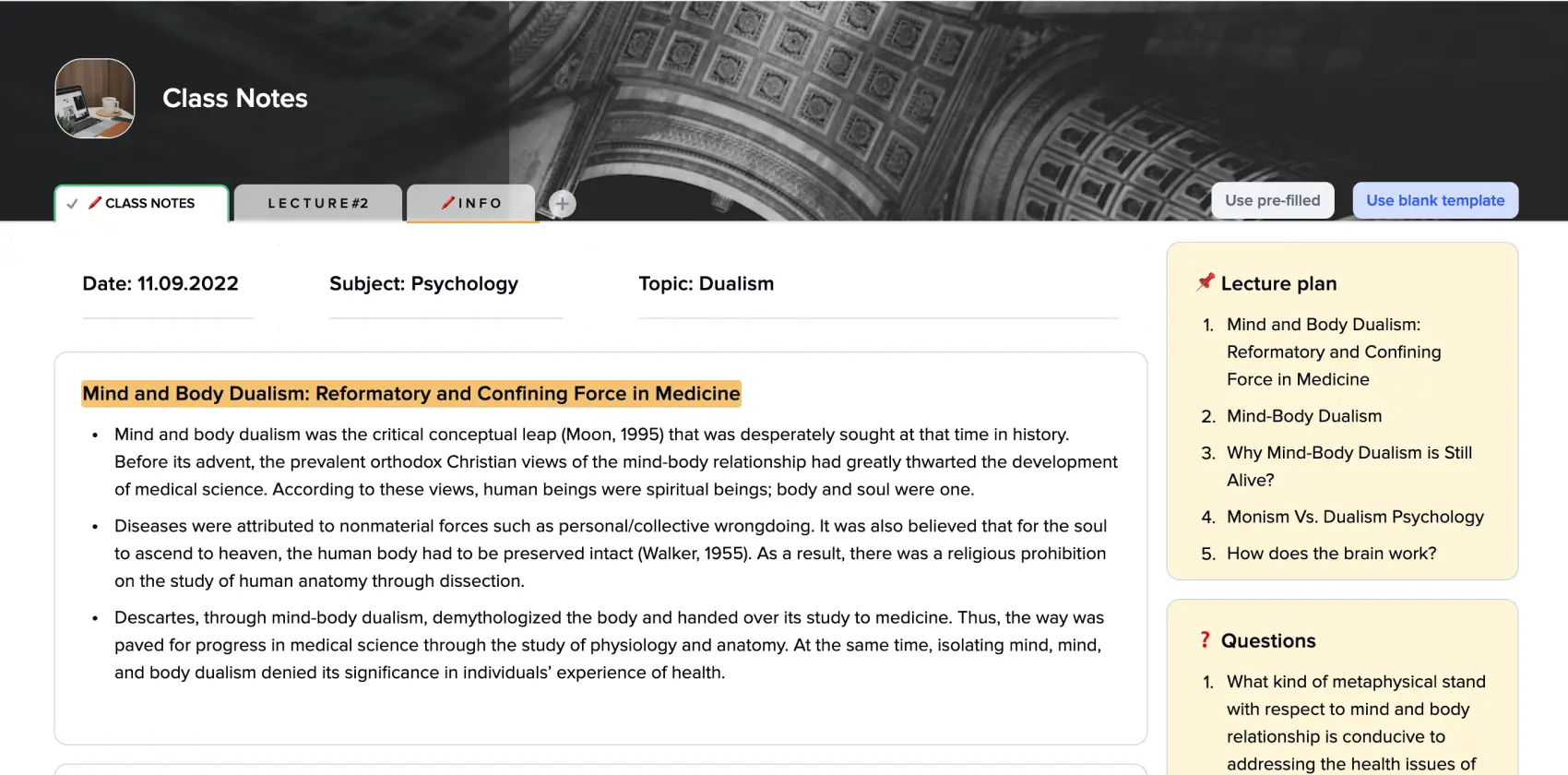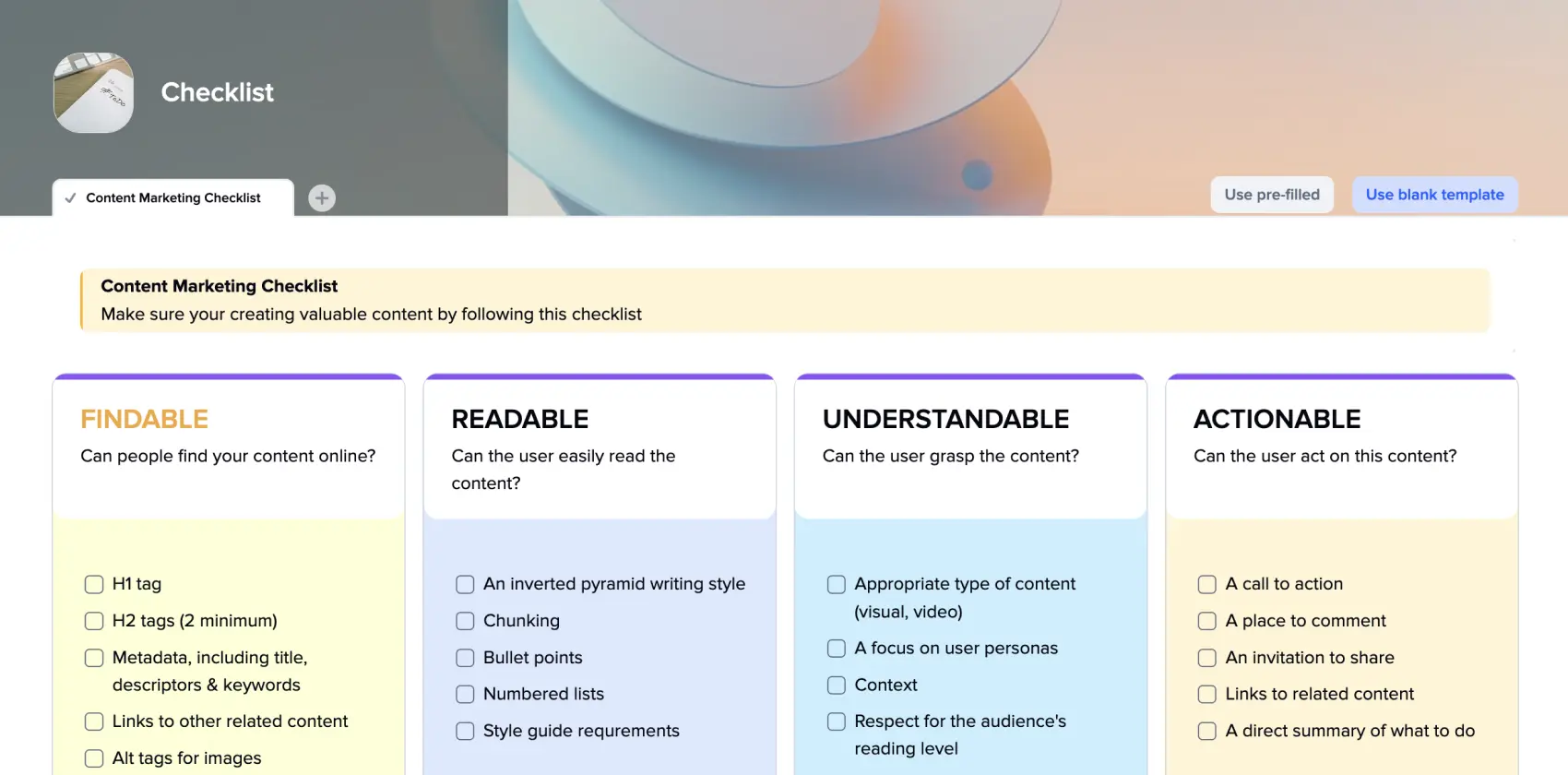Cornell Notes
This free Cornell Notes template is suitable for all students. It lets you review lectures, take notes, and capture screenshots, thoughts, and questions in one document.
What are Cornell Notes?
This is a system invented by Walter Pauk, an education professor at Cornell University in the 1950s, for taking notes in an organized way with their further easy reviewing and consideration.
Besides the fact that your success depends on many factors, like your determination, how hard you work, etc., there are small tools that support you during your journey. Cornell Notes system is one of them. Tested over the years by millions of students, it remains one of the best templates for easy note-taking.
It is generally believed that this note-taking method is for high school students and college level. However, everyone is free to use it, whether they are a student or not. Our entire life is about studying, so having a reliable supplementary tool may seriously ease the process. A great variety of free templates for Cornell note-taking, including Cornell Notes templates for Microsoft Word, Google Docs, and Pages, may help a wide circle of people discover this method and apply it to their advantage.
Since the method was developed a couple of decades ago, it has evolved a bit, and now there are different versions. Today, we even have field-specified ones. For example, Cornell Notes templates for math are quite popular. However, the classical one is still unbeatable due to its versatility.
So, what does a traditional Cornell note look like? A notetaker creates three sections: two columns (one will contain general data you’re taking down, and the other is for asking questions) and a summary at the bottom. This way, you have distilled information on the subject.
Why is the Cornell Notes Template so effective?
Do you use one method for making records from different spheres of your life? People whose answer is “Yes,” usually apply a pretty chaotic approach to writing down everything important and leaving it to later consideration. This basic-level idea of note-taking is about disadvantages mainly because it steals time, the most precious asset people possess.
If your compendium is only a couple of days old, then you probably are perfectly capable of finding needed pieces of information. However, if they were taken months ago, reading them is quite a riddle.
The advantages this note-taking system can bring into your study routine don’t end with the possibility of finding everything easily.
-
They help people process all the information they get during lectures, allowing them to write only the most important things.
-
They save you time when you’re preparing for an exam.
-
They help track hard questions and everything that requires additional study or research.
-
They allow you to concentrate more on the subject and not on the process of taking notes.
-
Another great bonus is that the consistent use of this method has been proven to strengthen studying skills and memory.
Why are Cornell Notes online templates better?
What is the main disadvantage of a paper notebook? It gives you only one try. Then, it turns into a mess with all the corrections and crossings. If you’re attending many courses, you may need a separate notebook. Can you imagine a bag of what size you must carry with separate notebooks or folders?
However, there’s more. Have you ever noticed how tempting it is to start doodling when the lecture is boring, or it’s just hard to concentrate? Next time you take a look at your notes, it’s full of funny drawings combined with single pieces of information.
What else can damage your notes? Food, liquids, ink strains, etc. However, notes with strains are not that big of a deal. You still have them and can still get something useful out of them. To lose them would be real trouble.
An xTiles Cornell notes template saves you from these threats. You can’t miss anything, but you can freely share (if you want, of course) your notes with your fellow students. No food, no drinks, and no ink can harm your notes now (even if something mentioned previously damaged your laptop, the notes are still perfectly safe).
After some time, your notes turn into your personal knowledge base. All years of lectures are gathered in one place with easy access and the possibility to find the needed information using the search command.
How to use Cornell notes
The Cornell method for note-taking is basically a system for organizing information. So, there would be certain steps with a strictly defined sequence. We will look at the traditional method, the one where you need a notebook and a pen, since it’s the hardest. If you use a template, this preparation phase is already done.
First, you need to divide the page into 3 or 4 parts. You need one small area at the top. There, you will put the date, subject, and topic. Please don’t neglect titles. They help you easily find the needed notes. If you use the xTiles template for Cornell Notes, choose the cover for your notes to make them easier to distinguish from your other records.
Then, you need a bigger area at the bottom of the page. That’s a place for a summary of your lecture. And you need two columns between these two sections. The one on the right side should be approximately twice as big as the left one.
The bigger column is for your notes. Write down everything using telegraphic sentences so that you can keep up with the lecture. You may also use symbols and abbreviations to record the general idea.
It’s worth remembering that when taking your notes, it’s important to retain only the most essential ideas and key points in the cue/recall column to aid memory and review.
Even though the Cornell note-taking system was created to organize people’s notes, sometimes you need to go over them once more to keep everything tidy. So, once the lecture is over, edit your notes before you forget what you could have meant.
The time of the left column comes when you return to your records to study. Review everything you put in the right column, summarize it into keywords, and define the main ideas. Then, write them down in the left column. You may need to highlight or underline the needed pieces to see the full picture and its main components. Some even go further and cross out those pieces that seem insignificant.
The left column is also for questions that arise during the lecture, but there’s no time to ask them or look for the answer. Write them down and clarify everything later.
FAQ
How do you do Cornell Notes?
Divide a sheet of paper into two columns, with a narrow column on the left and a wider column on the right. The left column is used for cues or questions, and the right column is used for note-taking.
What are the 5 parts of Cornell Notes?
The 5 parts are the heading, the notes section, the cue column, the summary, and the page number.
What is Cornell Notes?
This is a note-taking system created by Walter Pauk, an education professor at Cornell University. It is designed to help students organize their notes and review them effectively.
What is the Cornell method of note-taking?
This method is a system of note-taking that involves dividing a sheet of paper into two columns and using the left column to write cues or questions and the right column to write notes. It also includes a summary section at the bottom of the page.
How to do the Cornell note-taking method?
To use the Cornell note-taking method, divide your paper into two columns, with the left column smaller than the right. Use the left column to write cues or questions and the right column to write notes. At the bottom of the page, write a summary of the main points.
What does “cue” mean in Cornell Notes?
“Cue” refers to a word or phrase that represents a question or prompt that helps the note-taker remember the information in the notes. The cue column is where these cues or questions are written.

